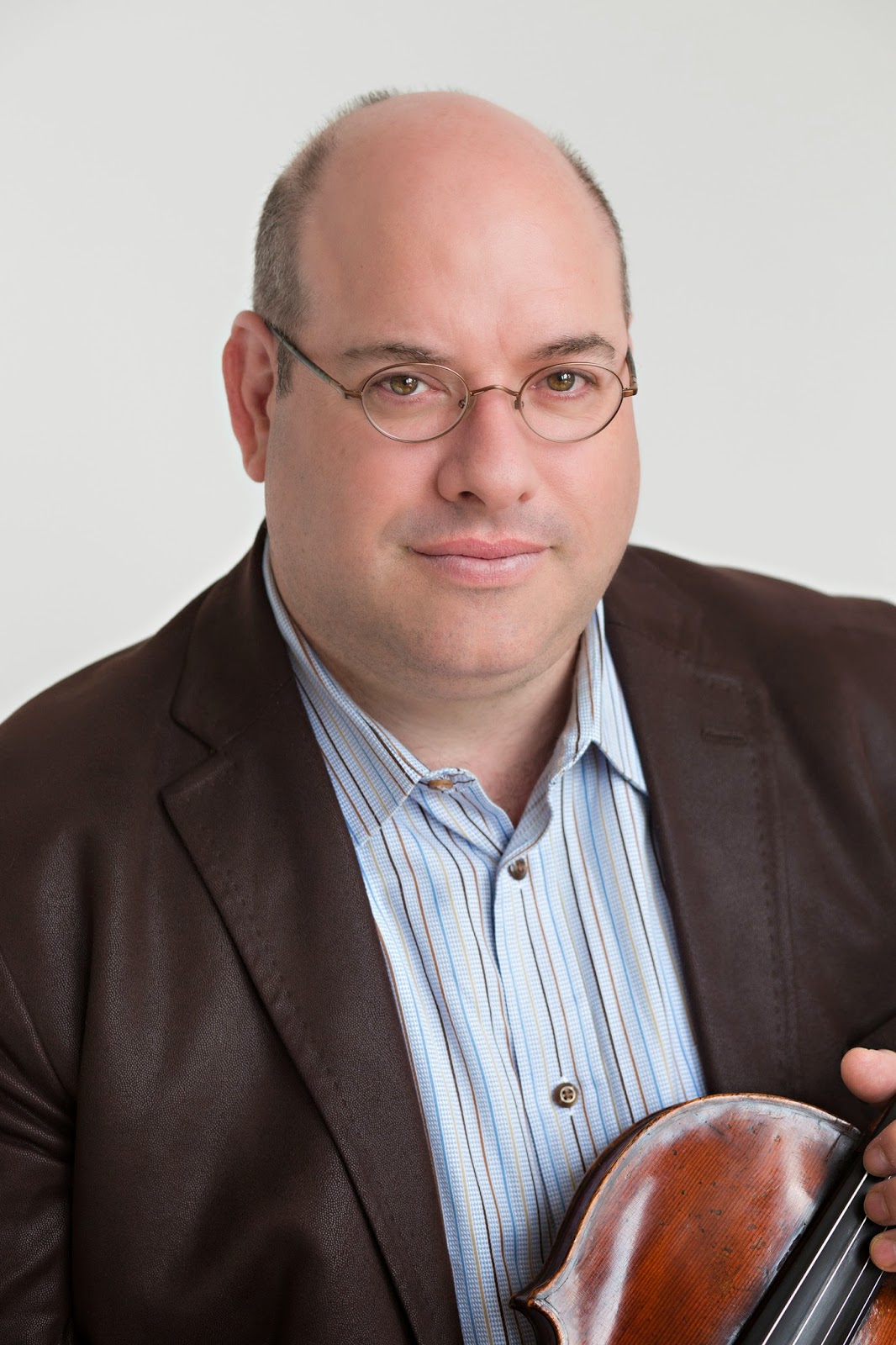Music @ Shaarey Tefilla reaches the end of the year with Shostakovich and Bloch
 | |
| Michael Strauss, violist and series director |
The nervous, diffident, unhealthy Shostakovich only rarely appears in his music, despite its deep streaks of anxiety, pathos and sardonic humor. All such emotions and defensive maneuvers, as expressed in his compositions, dependably indicate what he faced as the most conspicuous genius in Soviet musical life.
The well-knit program opened with Lev Atovmian's representation of Shostakovich's salon-music side through themes the master composed over a 20-year period — a gathering titled Five Pieces for Two Violins and Piano. The music has little in the way of Shostakovich's acrid harmonies, though it does display his rhythmic vitality and the folk-Russian cast of his melodies — qualities evident in the Waltz and Polka and in the Prelude, respectively.
The violinists were the Indianapolis Symphony Orchestra's two peas in a first-chair pod — Zach De Pue, concertmaster, and Alexander Kerr, principal guest concertmaster. Their duet playing certainly had a warm fraternal feeling, which bonded well with pianist Stuart Malina's facile accompanying. The middle piece, "Elegy," gets closest to the mood of grim reflection that the composer indulged in more expansively elsewhere. It made for a moving miniature, especially given the coordinated dynamics and wistful phrasing of this performance.
 |
| Guest artist Brandon Vamos is cellist in the Pacifica Quartet. |
A serious work ending in a mood of sunny nonchalance — not one of Shostakovich's frequent moods — the 1940 quintet brought out of these players a demonstrable unity of purpose. There were a few signs these expert musicians are not an accustomed unit, but some of them can be traced to the unyielding brightness and shallowness of the piano tone, which had too much ping in the treble. (Despite the amount of great music written for strings and piano, they aren't really compatible partners soundwise, and a keyboard instrument without much subtlety uncomfortably underlines that fact.)
The Scherzo, full of bright sonorities and an infectious tune, perhaps came off best. This music represents a major, genuine component of Shostakovich's artistry; too much has been made of him as a secret dissident. It may be uncomfortable for us on the other side of the late, unlamented Cold War to remember that Shostakovich was a Soviet patriot, fully willing to speak directly and exuberantly to his countrymen and to share in their joys and burdens.
This vitality came through in Monday's performance, as did the more unsettling balance of light and shade in the slow fugue that makes up the second movement. After the pulse-pounding Scherzo, the five were equally adept at plumbing the emotional depths of the Intermezzo. Its spectral march grows out of a lonely violin tune, played poignantly by Kerr against the pizzicato pulse of Vamos' cello. This is Shostakovich wearing the mask of existential dread, as if invoking Pascal's admission: "The eternal silence of these infinite spaces terrifies me."
That atmosphere is shooed away as the piano ripples into the finale, whose delightfully offhand manner triumphs in the end. Along the way, there are hints of bombast as well as of introspection, and the ensemble always seemed fit to embody all aspects of this protean composer.
The two Shostakovich works were separated by Bloch's Suite Hebraique for viola and piano. The sincerity and typically blatant manner of the Swiss-American composer are fully evident in this work, played with commitment and flair by Strauss and Malina. "Rhapsodie," the opening movement, has the earnest character of a recitative; that sets the scene for the slow march of "Processional," majestically introduced by the piano. The concluding "Affirmation" was especially notable for the dignified assertiveness of Strauss's viola.



Comments
Post a Comment